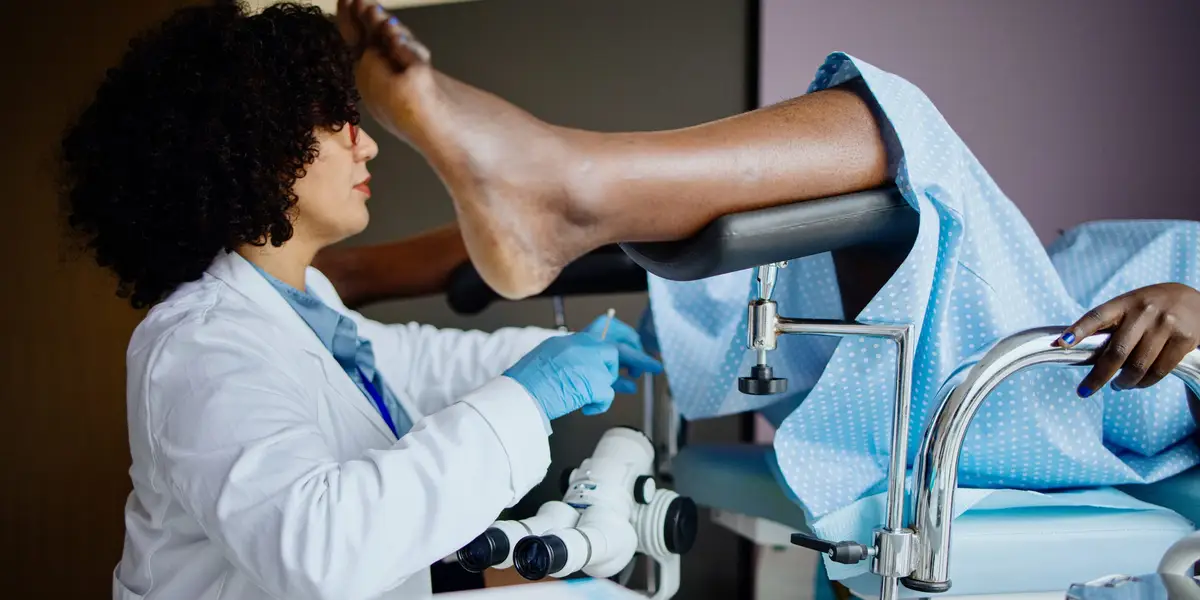Human papillomavirus (HPV) is one of the most common sexually transmitted infections (STIs) globally, with millions of new infections reported each year. HPV can affect both men and women and is associated with various health complications, including genital warts, cervical cancer, and other cancers of the reproductive tract. Understanding how HPV is transmitted is essential for preventing its spread, protecting sexual health, and reducing the burden of HPV-related diseases. In this comprehensive guide, we explore the intricacies of HPV transmission, risk factors, prevention strategies, and the implications for sexual health.
What is HPV?
Human papillomavirus (HPV) is a group of more than 200 related viruses, some of which are transmitted through sexual contact. HPV infections are classified into low-risk types, which are associated with benign conditions such as genital warts, and high-risk types, which can lead to cervical cancer, anal cancer, penile cancer, and other malignancies. HPV infections are highly prevalent, with most sexually active individuals acquiring at least one HPV infection in their lifetime.
Modes of HPV Transmission:
HPV transmission occurs through various modes of sexual contact and non-sexual routes. Understanding the modes of HPV transmission is crucial for implementing effective prevention strategies and reducing the risk of infection. The primary modes of HPV transmission include:
- Sexual Contact: HPV is primarily transmitted through direct skin-to-skin contact during sexual activities, including vaginal, anal, and oral sex. Genital HPV infections can be transmitted through contact with infected genital skin, mucous membranes, or bodily fluids, even in the absence of visible lesions or symptoms.
- Vertical Transmission: Vertical transmission of HPV occurs when a pregnant woman with genital HPV infection transmits the virus to her newborn during childbirth. While rare, vertical transmission can lead to respiratory papillomatosis, a condition characterized by the growth of HPV-related lesions in the respiratory tract of infants.
- Non-sexual Transmission: Although less common, HPV can also be transmitted through non-sexual routes, such as skin-to-skin contact in non-genital areas. HPV infections can be spread through shared personal items, such as towels, clothing, or sex toys, particularly if they come into contact with infected skin or mucous membranes.
Risk Factors for HPV Transmission:
Several factors increase the risk of HPV transmission and acquisition:
- Sexual Activity: Engaging in sexual activities, particularly unprotected vaginal, anal, or oral sex, increases the risk of HPV transmission. Individuals with multiple sexual partners or a history of sexually transmitted infections (STIs) are at higher risk of acquiring HPV infections.
- Young Age: Younger individuals, particularly adolescents and young adults, are at increased risk of HPV infection due to sexual debut and higher rates of sexual activity. Early sexual initiation and inconsistent condom use contribute to the higher prevalence of HPV infections among younger populations.
- Immune Suppression: Immune suppression, whether due to medical conditions (e.g., HIV/AIDS) or immunosuppressive medications (e.g., organ transplant recipients), can increase susceptibility to HPV infections and the persistence of HPV-related lesions.
- Smoking: Smoking is associated with an increased risk of HPV infection, as tobacco smoke contains carcinogens that can weaken the immune system and facilitate HPV transmission and progression to cervical cancer and other HPV-related cancers.
- Genital Warts: Individuals with genital warts caused by low-risk HPV types are more likely to transmit the virus to sexual partners through skin-to-skin contact during sexual activities. Genital warts serve as a visible indicator of HPV infection and can increase the risk of transmission.
Prevention of HPV Transmission:
Preventing HPV transmission is essential for reducing the burden of HPV-related diseases and protecting sexual health. Effective prevention strategies include:
- Vaccination: HPV vaccination is the most effective strategy for preventing HPV infection and its associated health complications. Vaccination is recommended for adolescents and young adults before sexual debut to maximize its effectiveness in preventing HPV-related cancers and genital warts.
- Condom Use: Consistent and correct use of condoms during sexual activities can reduce the risk of HPV transmission by providing a barrier against skin-to-skin contact and exposure to infected genital areas. While condoms may not provide complete protection against HPV, they can significantly reduce the risk of infection.
- Screening and Early Detection: Regular screening for cervical cancer through Pap tests or HPV DNA testing can detect precancerous changes caused by high-risk HPV types and facilitate early intervention and treatment. Screening allows for the detection of abnormal cells before they progress to invasive cancer.
- Abstinence: Abstinence from sexual activities, including vaginal, anal, and oral sex, is an effective way to prevent HPV transmission. While abstinence may not be feasible for everyone, delaying sexual debut and reducing the number of sexual partners can lower the risk of HPV infection.
- Education and Awareness: Increasing awareness about HPV transmission, prevention, and the importance of vaccination is essential for promoting sexual health and reducing stigma associated with HPV-related conditions. Education campaigns targeting adolescents, young adults, parents, and healthcare providers can improve knowledge and encourage proactive measures to prevent HPV infections.

Implications for Sexual Health:
HPV transmission has significant implications for sexual health, including:
- Increased Risk of HPV-related Diseases: HPV infections can lead to various health complications, including genital warts, cervical cancer, anal cancer, penile cancer, and oropharyngeal cancer. Persistent HPV infections with high-risk HPV types are associated with an increased risk of developing precancerous lesions and invasive cancers.
- Impact on Reproductive Health: HPV infections can affect reproductive health and fertility, particularly in women. Persistent HPV infections can lead to cervical dysplasia, which may require invasive treatments such as cervical conization or hysterectomy, potentially impacting fertility and pregnancy outcomes.
- Psychological and Emotional Impact: HPV-related conditions, such as genital warts or abnormal Pap smear results, can have psychological and emotional effects on individuals, including anxiety, distress, and stigma. Addressing the psychosocial aspects of HPV infections and providing support and counseling are essential components of comprehensive sexual healthcare.
- Partner Communication and Disclosure: Individuals diagnosed with HPV infections may face challenges related to partner communication and disclosure. Open and honest communication about HPV status, sexual history, and prevention strategies is essential for maintaining healthy relationships and preventing the transmission of HPV to sexual partners.
Conclusion:
Understanding HPV transmission is critical for implementing effective prevention strategies, protecting sexual health, and reducing the burden of HPV-related diseases. By raising awareness about the modes of HPV transmission, risk factors, and prevention methods, individuals can take proactive steps to reduce their risk of HPV infection and its associated health complications. Vaccination, consistent condom use, regular screening, and education about HPV are essential components of comprehensive sexual healthcare aimed at promoting health and well-being for all. By working together to address HPV transmission and its implications for sexual health, we can strive towards a future free of HPV-related diseases and their devastating consequences.



